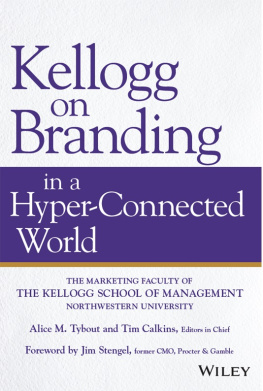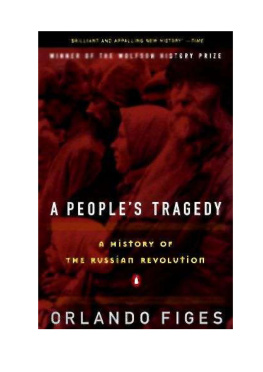Copyright 2021 Paul Kellogg
Published by AU Press, Athabasca University
1200, 10011 109 Street, Edmonton, AB T5J 3S8
https://doi.org/10.15215/aupress/9781771992459.01
Cover image: Village in Siberia, Adwo / Alamy Stock Photo, F23D4K
Cover design by Marvin Harder
Interior design by Sergiy Kozakov
Printed and bound in Canada
Library and Archives Canada Cataloguing in Publication
Title: Truth behind bars : reflections on the fate of the Russian Revolution / Paul Kellogg.
Names: Kellogg, Paul, 1955 author.
Description: Includes bibliographical references and index.
Identifiers: Canadiana (print) 20190182768 | Canadiana (ebook) 20190182814 | ISBN 9781771992459 (softcover) | ISBN 9781771992466 (PDF) | ISBN 9781771992473 (EPUB) | ISBN 9781771992480 (Kindle)
Subjects: LCSH: Martov, L., 18731923. | LCSH: Lenin, Vladimir Ilich, 18701924. | LCSH: Vorkuta (Komi, Russia: Concentration camp)History. | LCSH: Glavnoe upravlenie ispravitelno-trudovykh lagere OGPUHistory. | LCSH: Forced laborSoviet Union. | LCSH: Soviet UnionHistoryRevolution, 19171921.
Classification: LCC DK265 .K45 2021 | DDC 947.084/1dc23
This book has been published with the help of a grant from the Federation for the Humanities and Social Sciences, through the Awards to Scholarly Publications Program, using funds provided by the Social Sciences and Humanities Research Council of Canada.
We acknowledge the financial support of the Government of Canada through the Canada Book Fund (CBF) for our publishing activities and the assistance provided by the Government of Alberta through the Alberta Media Fund.
Please contact AU Press, Athabasca University at for permissions and copyright information.
Contents
Preface: On Forgetting to Read Solzhenitsyn
Acknowledgements
A Note on Translations and Transliterations
Introduction: Hope and Horror
PART 1 Vorkuta: Anvil of the Working Class
One Long Night, 193638
Striking Against the Gulag, 194753
The Vengeance of History, 198991
PART 2 Self-Emancipation Versus Substitutionism
The Peasant-in-Uniform
The Agrarian Question
Poland and GeorgiaThe Export of Revolution
Germany and HungaryThe United Front
PART 3 The Rear-View Mirror
Trotsky on Stalinism: The Surplus and the Machine
A Movements Dirty Linen
LeninBeyond Reverence
Intellectuals and the Working Class
Conclusion: Ends and Means
Notes
Bibliography
Index
Preface On Forgetting to Read Solzhenitsyn
It was in 1974 that I first picked up a copy of The Gulag Archipelago. I didnt finish reading it until this century. It is a very long bookseven books to be precise, published in three volumes that together run to roughly two thousand pages in English translation. But it shouldnt take forty years to read a book, even a very long one. Why it took me four decades to finish reading Aleksandr Solzhenitsyns crowning achievement requires a little backstory and can serve as an entry point into the present book.
Solzhenitsyns epic work documents one of the great crimes of the modern era, the Gulagthe network of prison camps in the former Soviet Union, which more than any other institution came to symbolize Stalinismthe authoritarian political system derived from the name of the Soviet Unions long-time ruler, Joseph Stalin. Gulag is an abbreviated form of Glavnoe upravlenie ispravitelno-trudovykh lagerei , or the Chief Administration for Corrective Labour Camps. But the term has come to signify much more than this. It refers, as Anne Applebaum notes, to an entire array of labor camps, punishment camps, criminal and political camps, womens camps, childrens camps, transit camps. It was not just a prison system, but a system of forced labour.
An archipelago is, of course, a chain of islands. In Solzhenitsyns view, the series of prison camps extending across the Soviet Union formed that amazing country of Gulag which, though scattered in an Archipelago geographically, was, in the psychological sense, fused into a continentan almost invisible, almost imperceptible country inhabited by the zek people
Barenberg suggests that, in employing the archipelago metaphor, Solzhenitsyn was exaggerating the extent to which the Gulag was an almost invisible, almost imperceptiblethat is, from the 26 June 1940 introduction of a law making it a criminal offense for a worker to leave their job without the employers permission, to the 5 March 1953 death of Stalin.
One aspect of this approach is both necessary and important, bringing into focus the massive, forced resettlement of millions of peasants. The resulting exile colonies need very much to be understood as part of the Gulag. However another aspectthe notion of placing the Gulag experience on a continuum of unfree labourwhile compelling on an abstract level, in the concrete can have the effect of obscuring the unique and terrible experiences of those condemned to the Gulag prison camps per se. Besides the appalling death rates, there were the hidden injuries of broken relationships and damaged lives.
Suzanne Rosenberg was one of the hundreds of thousands who were labelled enemies of the people and unjustly incarcerated in the forced labour camps of the Gulag. She did survive and was eventually released, but she returned home to a cold receptionincluding from her own young daughter, who at one point tore to shreds a photograph of her mother. Longing to disassociate themselves from their arrested parents, writes Rosenberg, such children all the more eagerly proclaimed their loyalty to the socialist regime. Over several years, Rosenberg repaired relations with her daughter, but her story helps bring into sharp relief the different life experiences of those within and those without the Gulag prison camps. Even if the category of free labourer did not exist in Stalinist Russia, Solzhenitsyn and others are absolutely right to emphasize the extreme circumstances faced by residents of the Gulag prison camps. The experiences of those confined within these prisons merit separate treatment from the experiences of those who managed to remain in regular society.
Estimating the total number of people who, at some point in their lives, experienced the forced labour regime of this archipelago is not a straightforward exercise. Applebaum, in the appendix (How Many?) to her monumental Gulag: A History, calculates that between 1929 and 1953, some eighteen million Soviet citizens were incarcerated in the camps of the Gulag. If we add to this figure the four million (mostly German) prisoners of war interned during World War II; the approximately seven hundred thousand former Russian prisoners of war who, once released from German camps, were sent to the Gulag; and the six million special exiles (including kulaks deported during collectivization, Poles, Balts and others deported after 1939, and Caucasians, Tartars, Volga Germans, and others deported during the war), then the total number of forced laborers in the USSR comes to 28.7 million.














